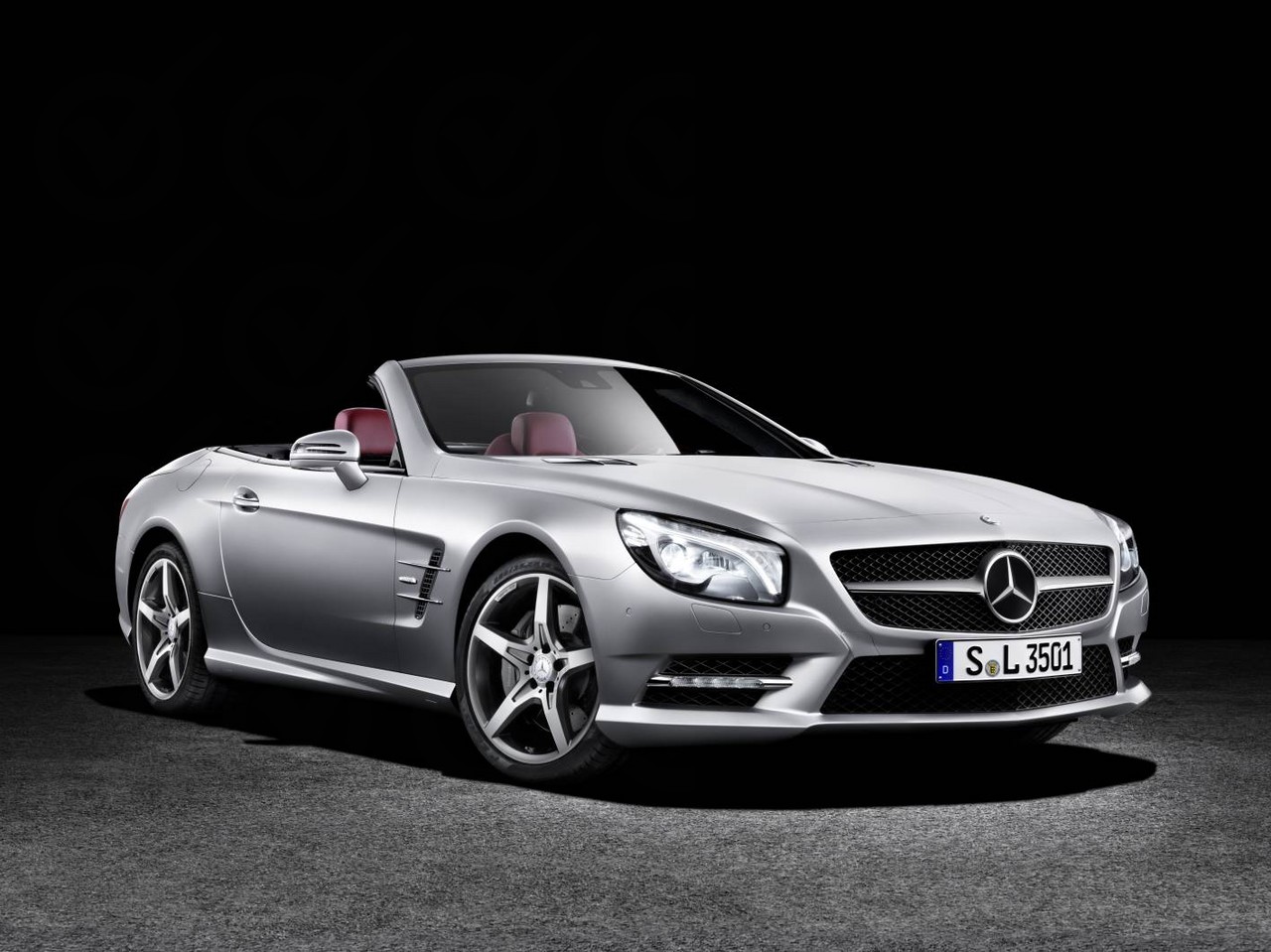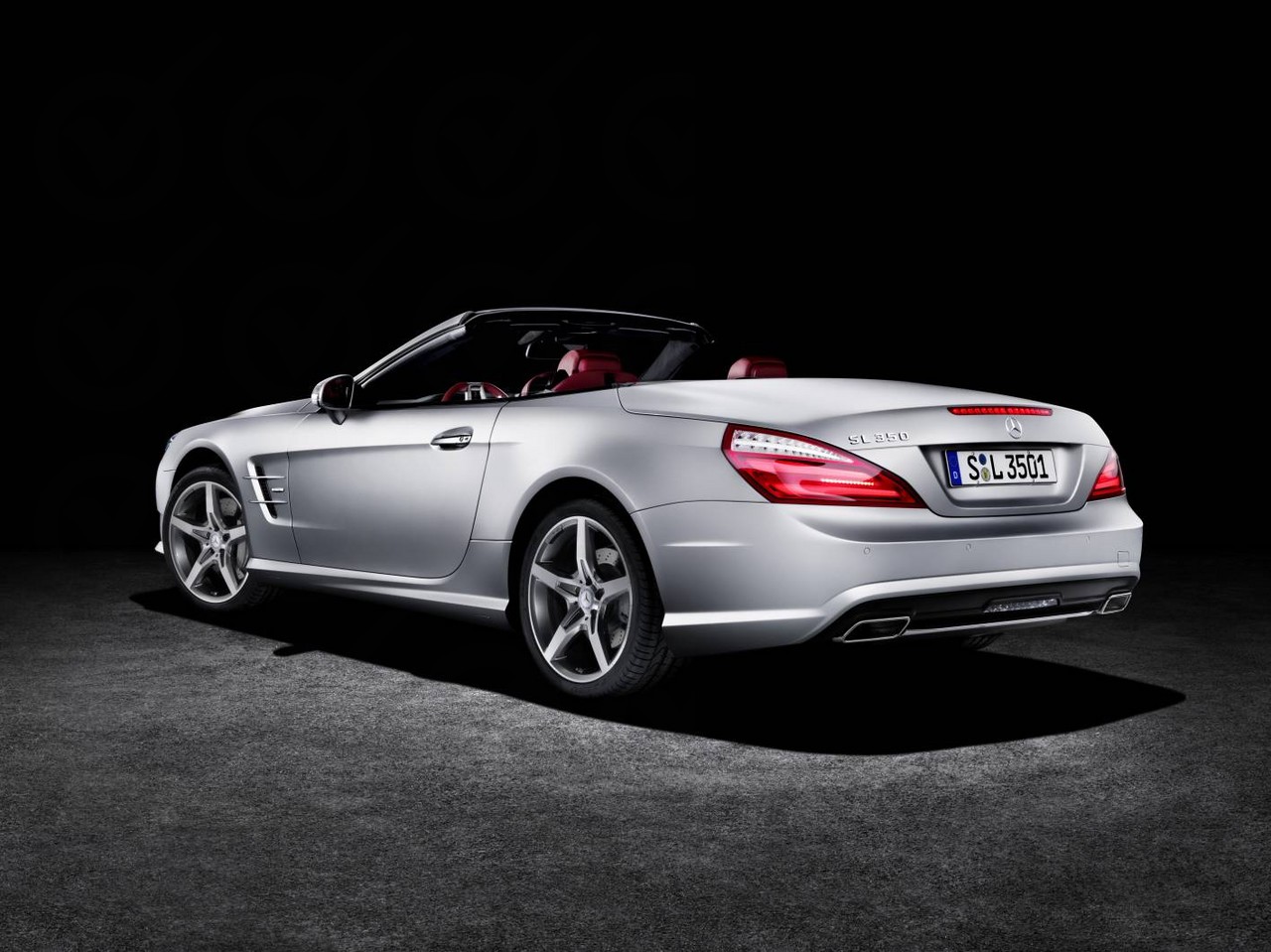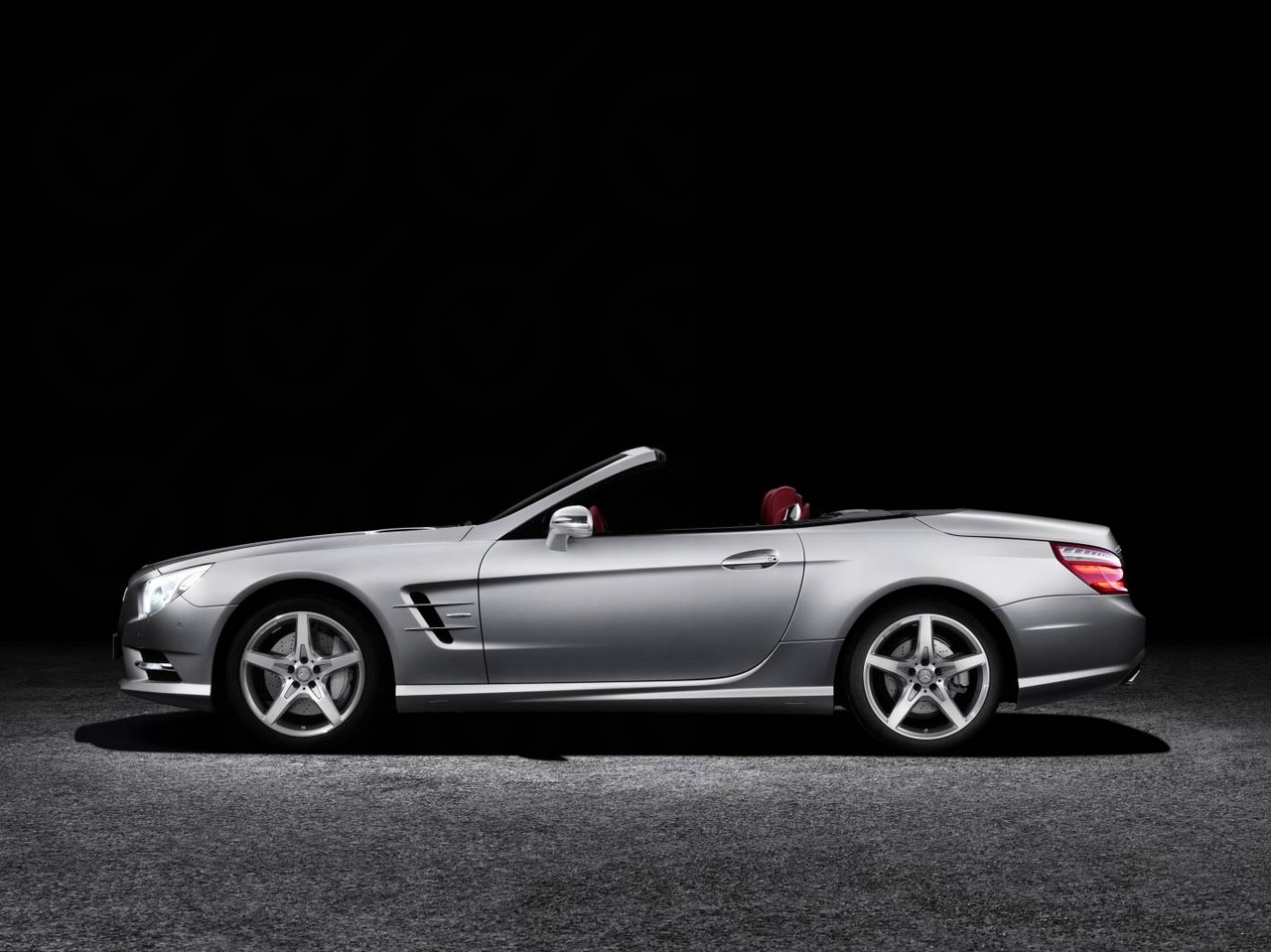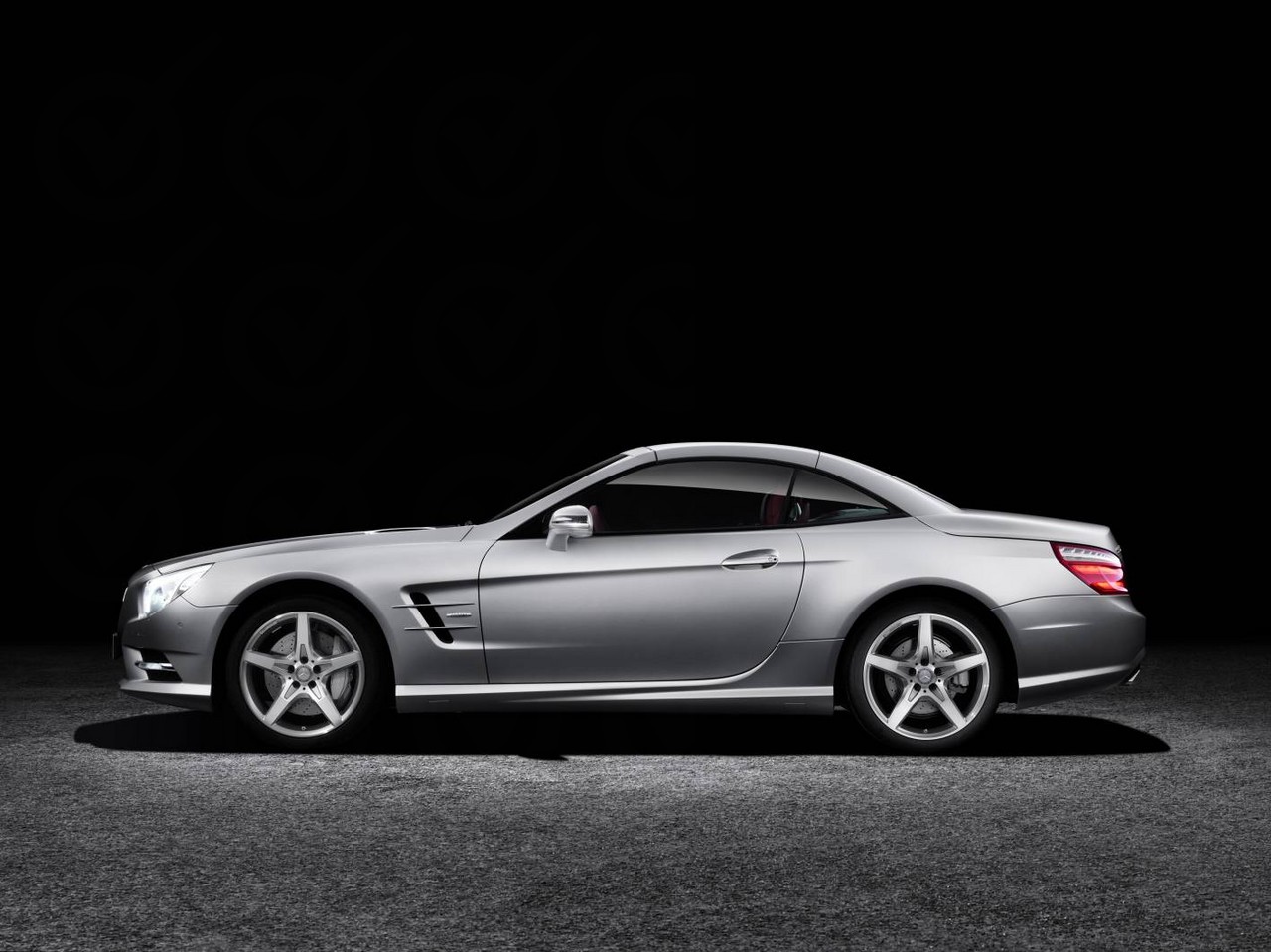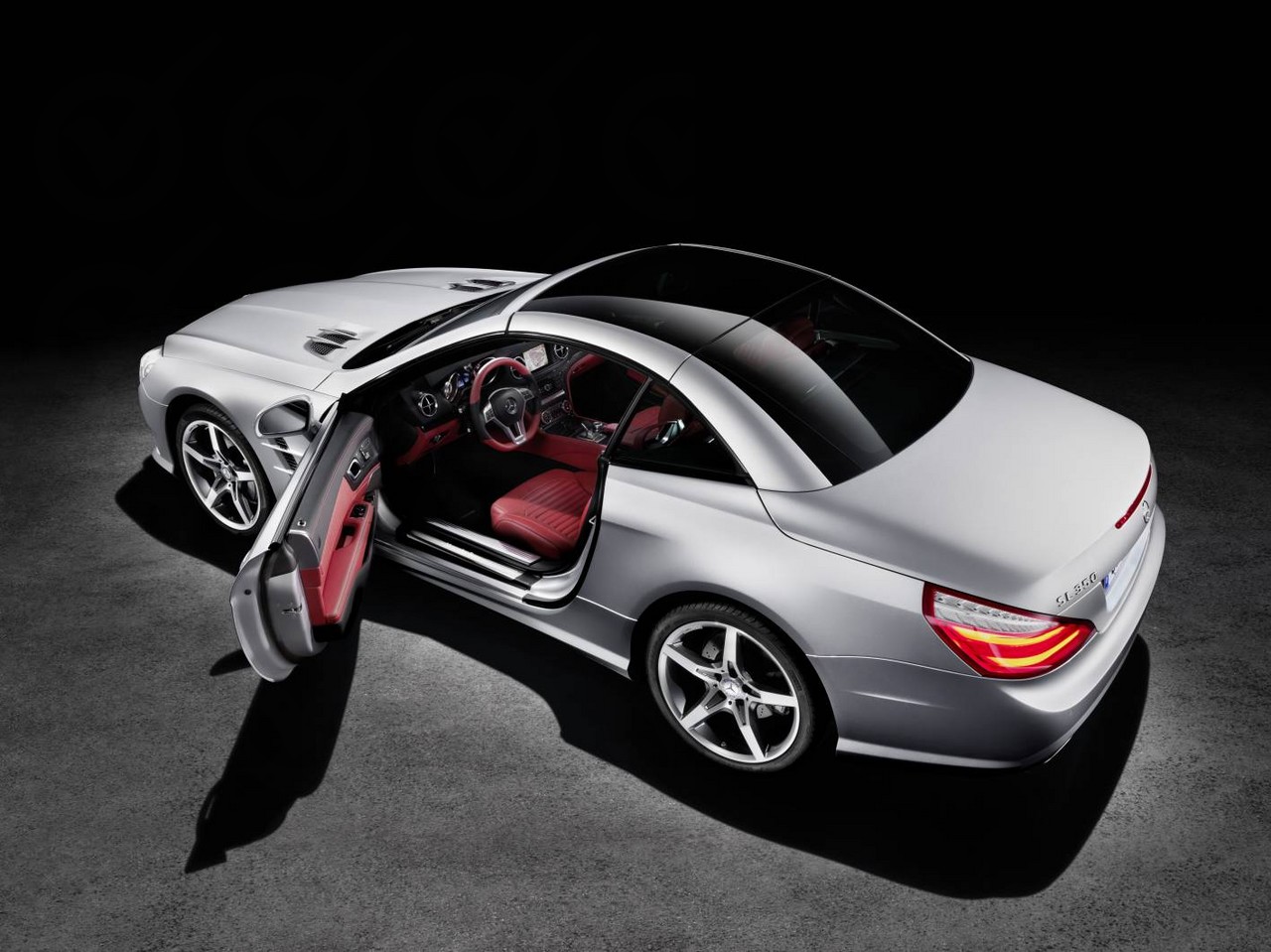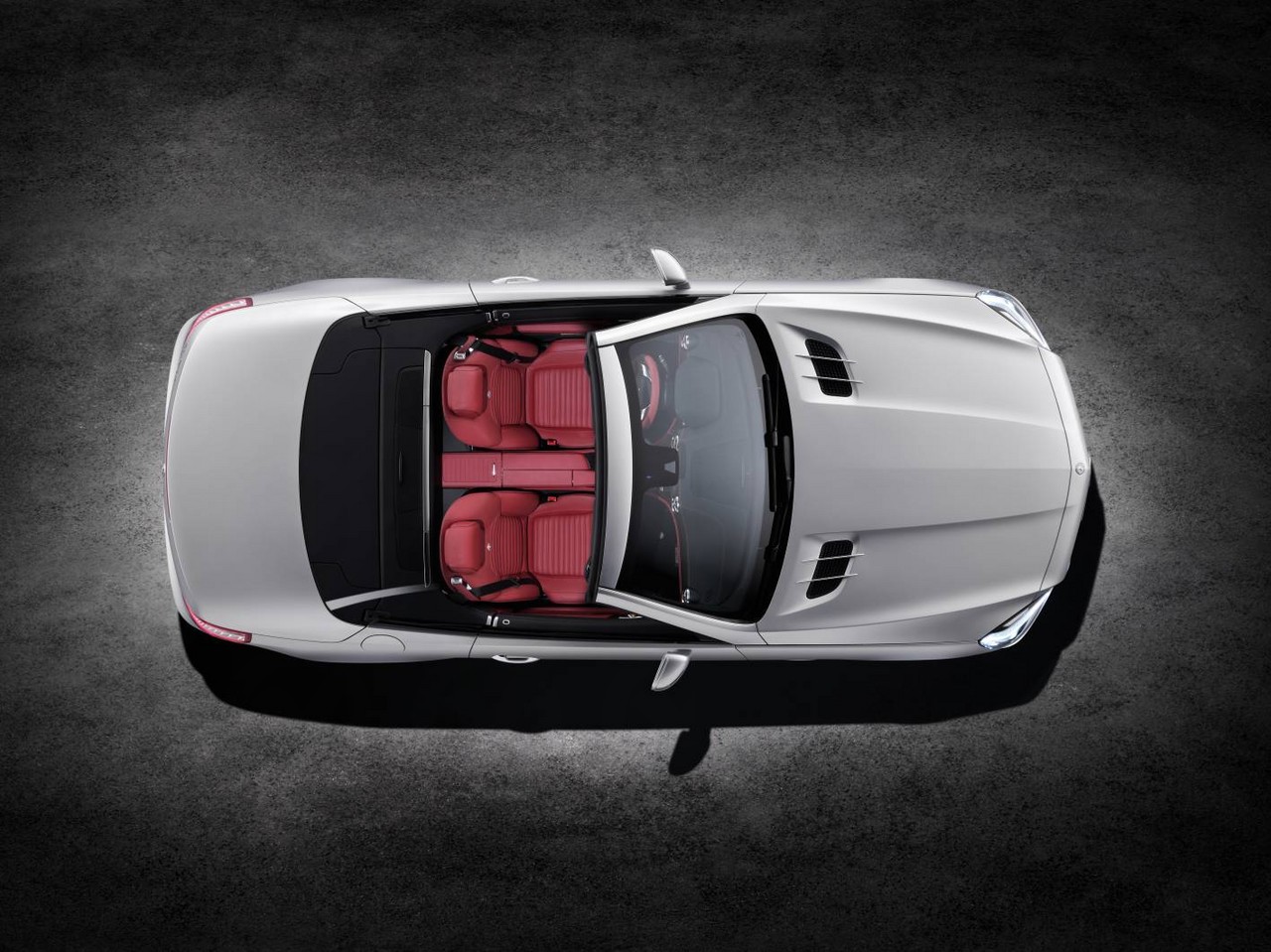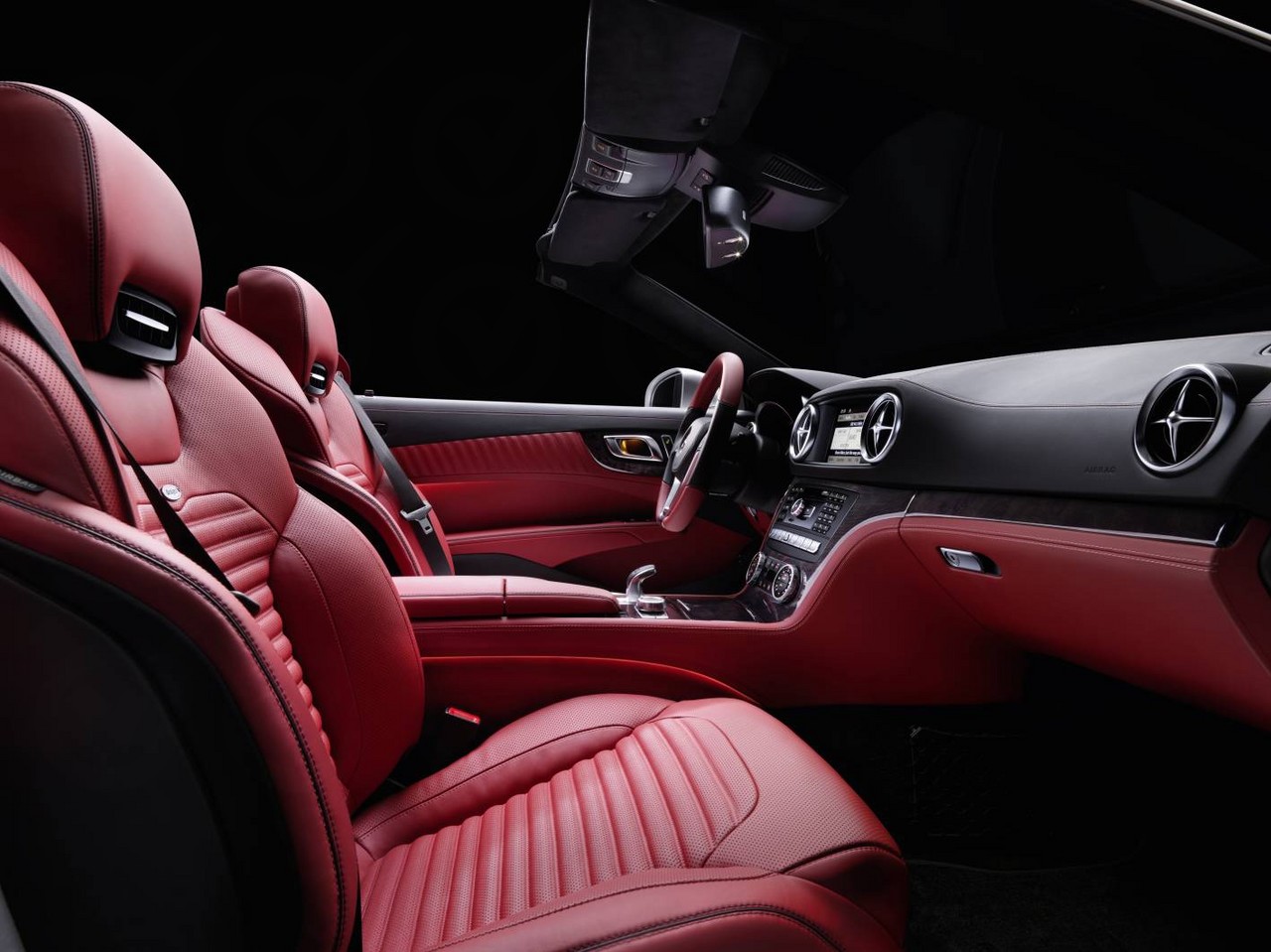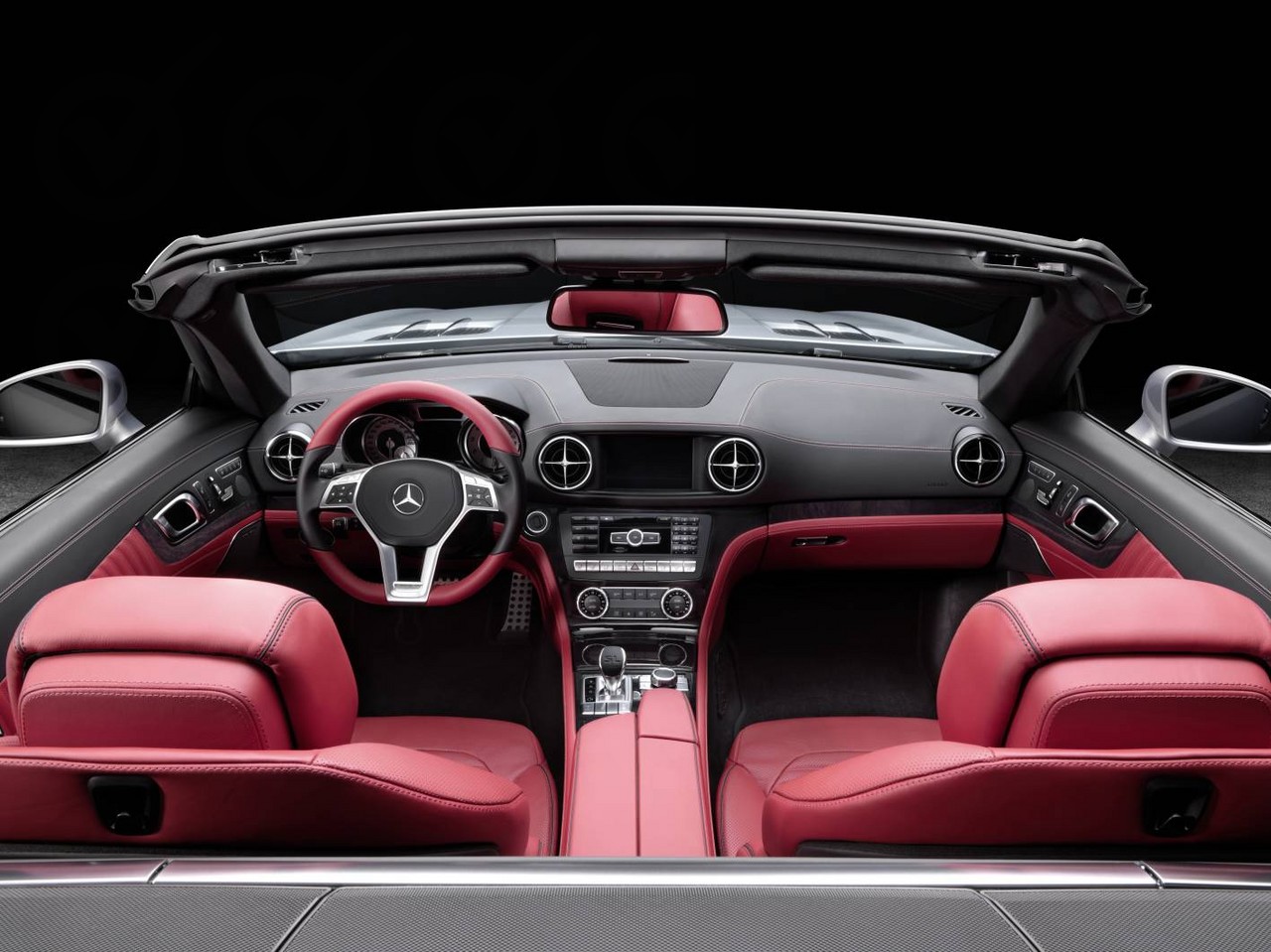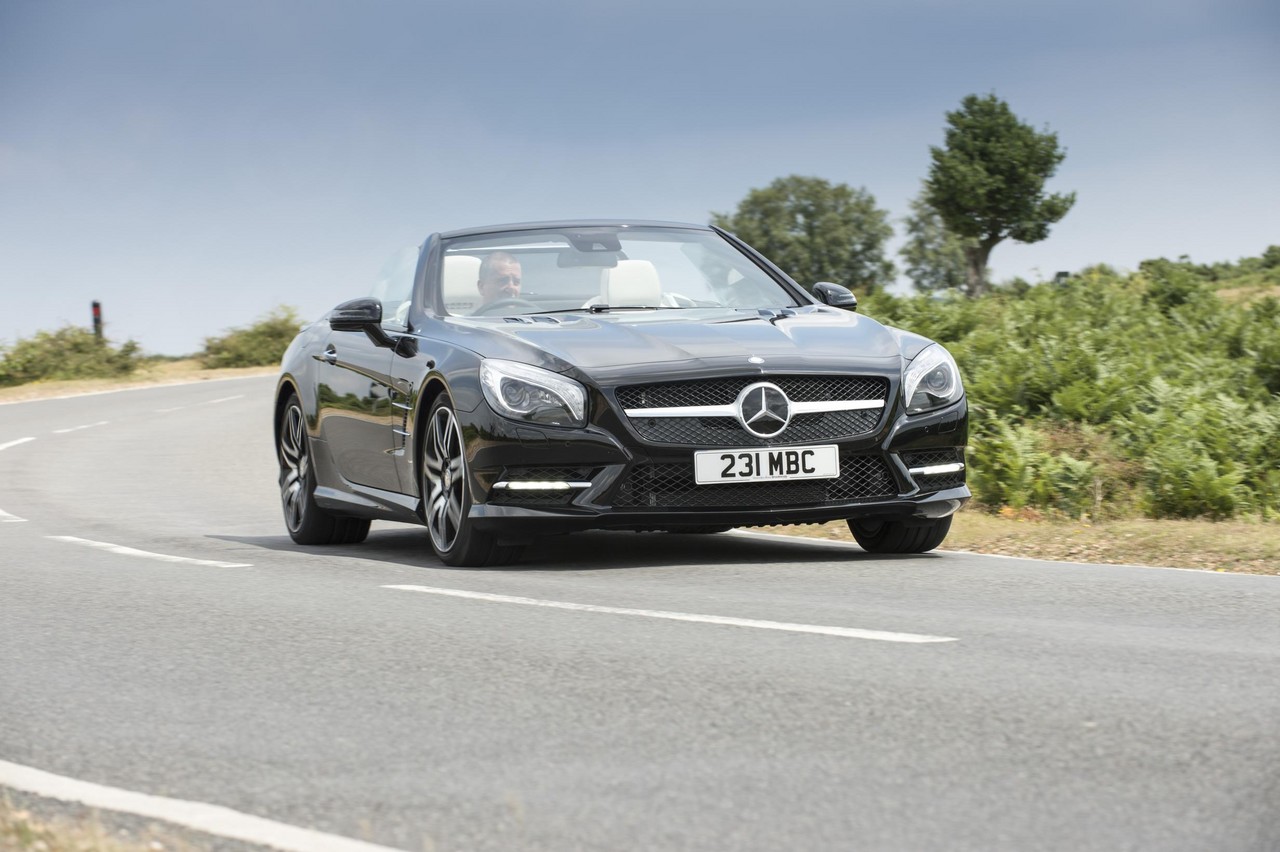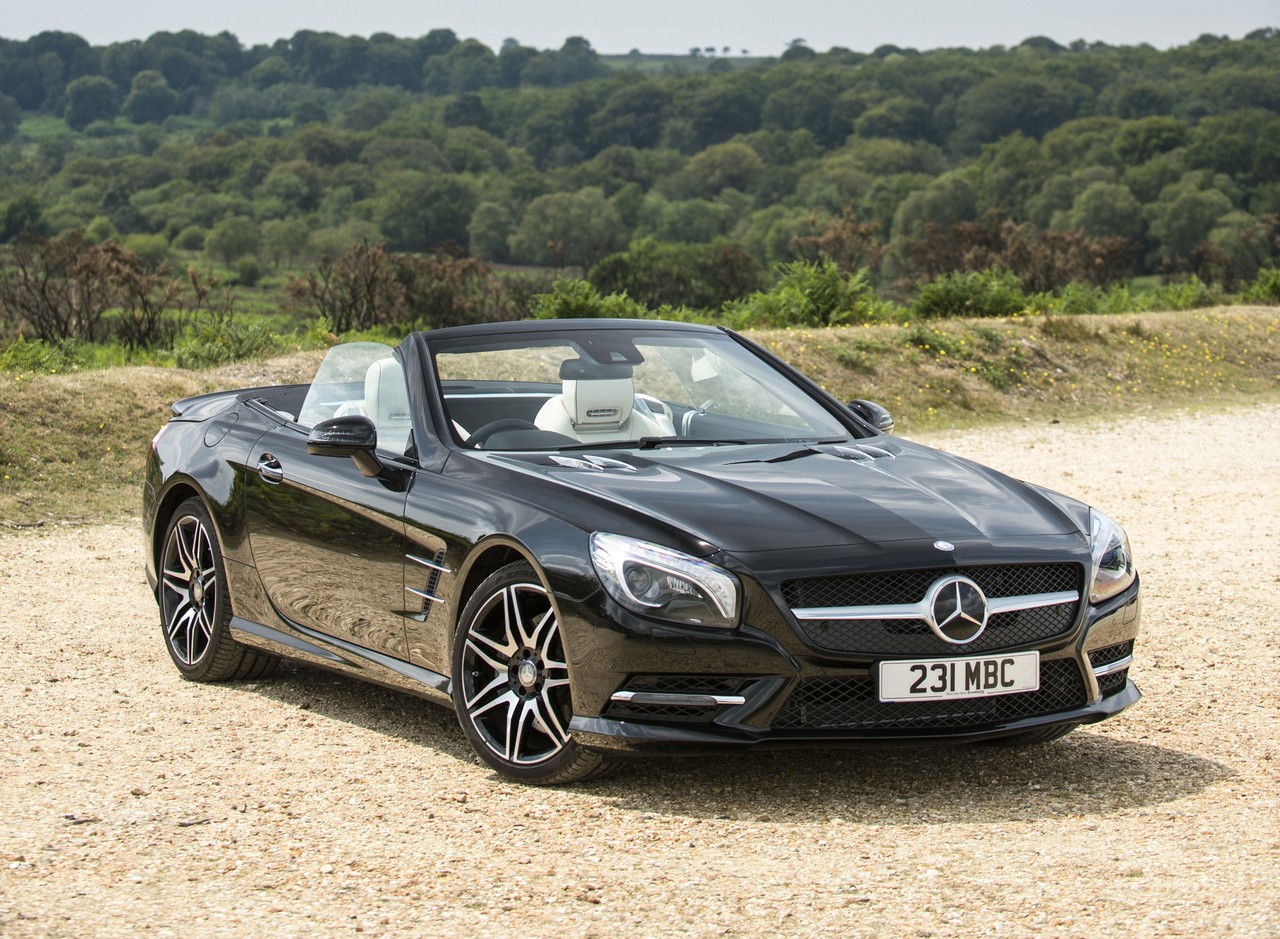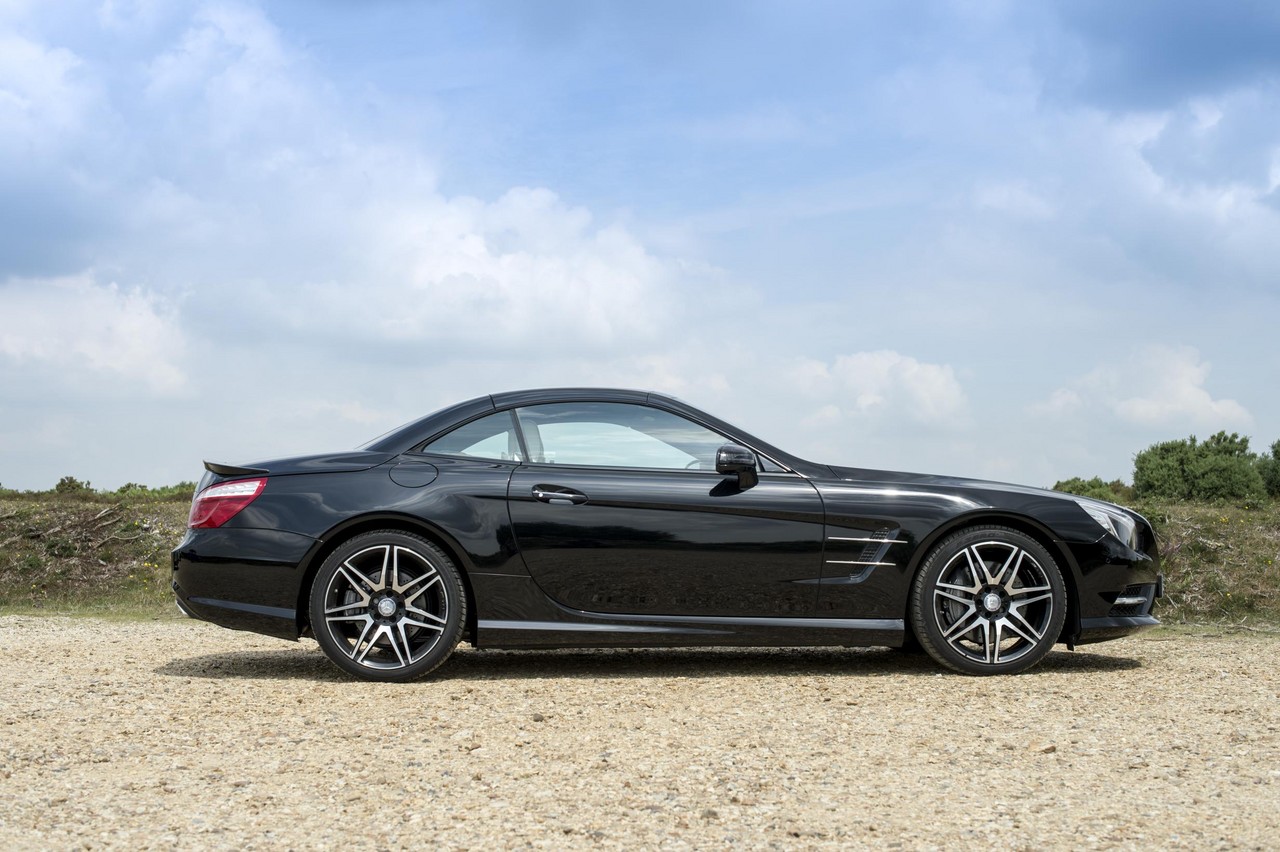
- Refined powertrains
- Competent dynamics and generally comfortable ride
- High standard of interior fit and finish
- Quiet, well-insulated cabin
- Hardly ‘Super Light’ and weight blunts agility
- Light, overly-assisted steering lacks feel and fails to engage the driver
- Suspension crashes through sharp bumps
- For SL 500, overly sensitive throttle
- High running, maintenance and depreciation costs
Overview
Released in September 2012, the Mercedes-Benz R231 SL-Class was a two-seat roadster with a retractable hardtop roof. Manufactured in Bremen, Germany, the rear-wheel drive R231 SL range initially consisted of SL 350 and SL 500; in November 2014, the SL 350 was replaced by the SL 400. All engines in the R231 SL-Class range featured ‘ECO start/stop’ which enabled them to shut down when the vehicle was stationary in traffic to minimise fuel consumption.
Please note that the Mercedes R231 SL 63 and SL 65 AMG have been reviewed separately.
| Engine | Trans. | Years | Peak power | Peak torque | |
|---|---|---|---|---|---|
| SL 350 BE | 3.5-litre petrol V6 (M276) | 7sp auto | 2012-14 | 225 kW at 6500 rpm | 370 Nm at 3500-5250 rpm |
| SL 400 BE | 3.0-litre bi-turbo petrol V6 (M276) | 7sp auto | 2014-20 | 245 kW at 5250-6000 rpm | 480 Nm at 1600-4000 rpm |
| SL 500 BE | 4.6-litre bi-turbo petrol V8 (M278) | 7sp auto | 2012-20 | 320 kW at 5250 rpm | 700 Nm at 1800-3500 rpm |
Dimensions and body
Compared to the R230 SL-Class , the R231 SL-Class was 50 mm longer (at 4612 mm), 57 mm wider (1877 mm), 20 mm taller (1315 mm) and had a 25 mm longer wheelbase (2585 mm). The R231 SL-Class had an aluminium space-frame bodyshell which resulted in a 20 per cent increase in torsional rigidity (to 19,400 Nm per degree) and mass reductions of around 110 kg compared to the steel of body of its predecessor.
Furthermore, the power-operated hardtop roof could open or close in less than 20 seconds.
Suspension and steering
The Mercedes-Benz R231 SL had multi-link front and rear suspension with semi-active adjustable damping as standard. The AMG variants, however, were also fitted with ‘Active Body Control’ – a self-levelling, height-adjustable hydraulic-based suspension system which reduced body roll. The R231 SL-Class was also fitted – as standard – with ‘Direct-Steer’, a variable-ratio speed-sensitive electromechanical power steering system.
Safety equipment
Standard safety equipment for the Mercedes-Benz R231 SL-Class included dual front airbags, seat-mounted front side (thorax) airbags, front seat head airbags, ABS, electronic brake force distribution, brake assist, electronic stability control, traction control, active front seat head restraints (‘Neck-Pro’), seatbelts with pre-tensioners and load limiters. The SL was fitted with an active bonnet which, in the event of a pedestrian collision, would rise to minimise the severity of the pedestrian’s subsequent impact with the vehicle.
As standard, the R231 SL-Class was also equipped with:
- Mercedes-Benz’s ‘Pre-Safe’: in the event that an accident was anticipated, Pre-Safe would prepare the vehicle by tensioning the front seat belts, inflating the air cushions in the multicontour seats and closing the sunroof and windows (if open);
- Distronic Plus (adaptive cruise control with brake warning): an ‘adaptive’ cruise control system which used two short-range radar sensors positioned behind the front bumper to monitor the road up to 30 metres ahead, and a long-range radar located behind the radiator grille which had a range of 200 metres. Operating at speeds up to 200 km/h, Distronic Plus used an electronic control unit to analyse the information from both radar systems to calculate the engine, automatic transmission and braking parameters required for proximity control. As such, Distronic Plus could automatically apply the brakes to prevent the vehicle from becoming too close to traffic ahead (the time interval could be specified) and accelerate back to the set speed when traffic allowed. To accelerate from rest, the driver only needed to operate the Distronic stalk on the steering column or briefly depress the accelerator pedal. With Distronic Plus, automatic deceleration of up to four (4) m/s2was possible. If Distronic Plus detected that heavier braking was required, a warning light would illuminate in the instrument cluster and be accompanied by an audible warning. Furthermore, the electronic proximity control system could be activated independently of Distronic Plus at speeds over 30 km/h to alert the driver if they were approaching another vehicle too rapidly;
- Brake Assist Plus: used a 24 GHz radar sensor with a range of 30 metres to monitor the distance to the vehicle ahead and would warn the driver if there was a risk of a collision. Significantly, Brake Assist Plus could calculate the necessary brake force assistance to prevent a rear-end collision, build up that pressure in the braking system and provide it as soon as the brake pedal was depressed for ‘the best possible deceleration’;
- Active Blind Spot Assist: active at speeds above 60 km/h, a corrective braking force would be applied to the wheels on one side of the vehicle if the driver attempted to change lanes when a vehicle was detected in the driver’s blind spot;
- Active Lane Keeping Assist: would vibrate the steering wheel as the vehicle approached a continuous lane marking line and, if crossed, automatically brake wheels on one side of the vehicle to return the vehicle within the lane; and,
- Attention Assist with drowsiness detection: operated at speeds in excess of 80 km/h and assessed driver behaviour (including steering movements) for signs of drowsiness; if detected, the driver would be provided with visual and audible warnings.
Features: R231 SL 350 and SL 500
Standard features for the Mercedes-Benz R231 SL 350 BlueEfficiency included 18-inch alloy wheels with run flat tyres, a fourteen speaker Harman Kardon Logic 7 600W surround sound system, COMAND Online (cockpit management and data system) including a six-disc DVD/CD changer, MP3/WMA/AAC compatibility, auxiliary inputs (3.5 mm/iPod/USB), an SDHC card slot, a 10GB HDD for music storage, a 17.8 cm colour monitor, DVD navigation, Bluetooth connectivity and ‘Linguatronic’ voice recognition, climate control air conditioning, ‘Airscarf’ neck level heating, leather upholstery, cruise control with variable speed limiter (‘Speedtronic’), front and rear fog lights, directional bi-xenon headlights with adaptive lighting, daytime LED running lights, rain-sensing wipers, front and rear parking sensors, a reversing camera, leather-wrapped multifunction steering wheel with gearshift paddles, remote central locking with proximity key and keyless start (‘Keyless Go’), power windows and heated mirrors, a height and reach adjustable steering wheel, a power-operated park brake, tyre pressure monitoring, a TV tuner, ambient lighting, an alarm and immobiliser.
The SL 350 BlueEfficiency also featured:
- ‘Active Parking Assist’ which could identify parking spaces using ultrasound sensors and autonomously steer the vehicle into the space;
- ‘Hands-Free Access’ which could open the boot in response to the driver moving their foot in the vicinity of the rear bumper; and,
- Magic Vision Control which directed water onto the windscreen via channels in the windscreen wiper blades to keep the windscreen clean.
Compared to the SL 350 BlueEfficiency, the SL 500 BlueEfficiency was further equipped with 19-inch alloy wheels with run flat tyres, Nappa leather upholstery, a combination wood/leather steering wheel and Burr Walnut interior trim.
June 2014 updates and SL 400
In June 2014, the R231 SL range was revised as the SL 400 replaced the SL 350, and the SL 500 engine was updated for Euro VI emissions compliance.
As part of the update, standard features were extended to include digital (DAB) radio and Mercedes-Benz’s ‘Frontbass’ system which used the free spaces in the front footwell structures as resonance chambers for the bass loudspeakers. Standard features for the SL 500 and above were extended to include power-closing doors.
Brochures and downloads
- Press Kit: Mercedes-Benz R231 SL-Class (September 2012)
- Specifications: Mercedes-Benz R231 SL-Class (September 2012)
- Brochure: Mercedes-Benz R231 SL-Class (December 2012)
- Brochure: Mercedes-Benz R231 SL-Class (May 2014)
Related links
- Press Kit: Mercedes-Benz R231 SL (March 2012)
- Mercedes-Benz Australia: Mercedes-Benz SL-Class
- Wikipedia.org: Mercedes-Benz R231 SL-Class
